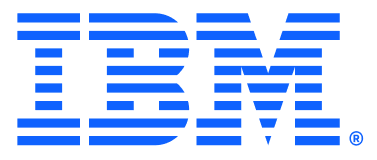
DevOps Engineering
Technical Microcredential
Develop the skills to automate, secure, deploy, and monitor modern software systems through a dynamic mix of self-paced modules, optional live instructor-led sessions, and collaborative peer learning.
12 weeks, excluding 1 week orientation.
12–13 hours of cohort-based learning per week, entirely online.
Email: ibmeducation@getsmarter.com
Call: +1 617 977 6889
About This Technical Microcredential
IBM’s DevOps Engineering online technical microcredential is a hands-on, premium learning experience that supports your career transition into the competitive field of DevOps. Over 12 weeks, you’ll gain practical expertise in automation, containerization, microservices, and cloud-native development while applying security best practices and monitoring strategies. Through flexible self-paced modules, optional live classes, and instructor support, you’ll learn how to build a secure, automated DevOps pipeline. On completion, you’ll walk away with a portfolio-ready capstone project and a certificate from IBM, a recognized leader in innovation and IT.
What Is a Technical Microcredential?
A technical microcredential is a short, flexible course designed to quickly build in-demand skills for the modern workforce. Blending live instruction with self-paced learning, these cohort-based courses offer a high-impact, affordable way to upskill. Each technical microcredential is developed in collaboration with top universities and industry leaders. Learners benefit from peer interaction and networking opportunities within a supportive, engaged cohort.
What This Technical Microcredential Covers
This technical microcredential covers the core concepts and best practices of DevOps — including continuous integration and continuous delivery/deployment (CI/CD), infrastructure as code, microservices, serverless architectures, and application security. You’ll learn to work with industry-standard tools such as Kubernetes and OpenShift; explore test-driven and behavior-driven development (BDD); and gain experience applying monitoring and observability techniques. Toward the end of the course, you will work on a comprehensive portfolio-ready capstone project that demonstrates your ability to develop a secure RESTful microservice and build an automated DevOps pipeline.
A Powerful Collaboration
IBM is collaborating with online education provider GetSmarter to create a new class of learning experience — one that is innovative, engaging, and personalized for the working professional.
About IBM
Advance your tech career with training built for the real world.
At IBM, we’re passionate about delivering education to professionals who want to lead with confidence in a rapidly evolving digital landscape. Drawing on a proud legacy of innovation, IBM delivers industry-relevant learning that blends business insight with real-world application — equipping you to solve complex challenges, drive smarter decisions, and stay competitive where it counts.
Our courses reflect a commitment to relevance, accessibility, and measurable impact — developed in collaboration with leading practitioners at the forefront of their fields. Whether advancing in your current role or exploring new opportunities, IBM helps you build skills that matter — shaped by purpose, grounded in practice, and always focused on what comes next.

About GetSmarter
GetSmarter partners with the world’s leading universities and institutions to select, design, and deliver premium online short courses with a data-driven focus on learning gain.
Technology meets academic rigour in GetSmarter’s people-mediated model, which enables lifelong students across the globe to obtain industry-relevant skills that are certified by the world’s most reputable academic institutions.
As a participant, you will also gain unlimited access to edX’s Career Engagement Network at no extra cost. This platform will provide you with valuable career resources and events to support your professional journey. You can look forward to benefits including rich content, career templates, webinars, workshops, career fairs, networking events, panel discussions, and exclusive recruitment opportunities to connect you with potential employers.
What You’ll Learn
You’ll be welcomed to the technical microcredential and begin connecting with fellow students, while exploring the navigation and tools of your Online Campus. Be alerted to key milestones in the learning path, and review how your results will be calculated and distributed.
You’ll be required to complete your student profile, confirm your email address for the delivery of your digital certificate, and submit a digital copy of your passport/identity document.
Please note that module titles and their contents are subject to change during course development.
Learn how to build cloud-native applications and deploy and scale your applications.
- Describe the core concepts and advantages of containerization
- Explain how Docker components and architecture support the building, running, and management of containers
- Discuss the role of Kubernetes in orchestrating containerized applications and managing deployment environments
- Explain how Kubernetes features enable application lifecycle management
- Demonstrate how enterprise platforms such as OpenShift extend Kubernetes with enhanced tools for automation, builds, and service management
Delve into microservices and serverless computing and learn how to build and manage scalable cloud applications.
- Describe the principles of microservices and how they differ from monolithic and SOA architectures
- Determine how microservices communicate and identify patterns that support scalability
- Review the features of REST APIs and GraphQL, and explain the role of API gateways
- Explain how Swagger, Postman, and cURL are used to test and document APIs
- Discuss the concepts, benefits, and limitations of serverless computing and the FaaS model
- Describe how containers and cloud platforms enable deploying, updating, and scaling microservices
Explore software testing fundamentals, levels, and workflows.
- Explain the importance of testing and the risks of untested code
- Describe testing levels, release cycles, and TDD vs. BDD
Explore TDD tools and techniques to write effective tests.
- Explain the principles and benefits of Test-Driven Development (TDD) in DevOps
- Describe common Python testing tools, test cases, assertions, and fixtures
- Apply advanced testing techniques, including coverage, factories, fakes, and mocking
- Determine how the TDD workflow improves code quality, reliability, and automation in CI/CD pipelines
Learn how to apply Behavior-Driven Development (BDD) using Behave and Gherkin.
- Explain the core concepts and goals of Behavior-Driven Development (BDD)
- Describe the structure, workflow, and syntax of BDD scenarios
- Determine how BDD tools like Behave, Selenium, and Cucumber facilitate automated testing
- Show how step definitions, context variables, and variable substitution work in Behave
Learn about CI/CD pipelines and automation workflows.
- Describe the purpose and benefits of continuous integration and continuous delivery/deployment (CI/CD) within the DevOps lifecycle
- Determine the core components of CI/CD pipelines and common tools and platforms used to support automation
- Explore Git-based collaborative workflows such as branching and pull requests to support automated integration and delivery
- Build a basic CI/CD workflow using GitHub Actions to automate code building, testing, and deployment
Explore modern delivery practices using DevOps and GitOps principles.
- Explain the principles, goals, and practices of continuous delivery/deployment (CD)
- Determine how Tekton supports CD through tasks, triggers, and pipeline automation
- Explore the components and benefits of a DevOps pipeline using OpenShift and GitOps
- Use DevOps, GitOps, and DevSecOps, and demonstrate their roles in secure automation
Learn core security principles to protect applications and data.
- Explain key security concepts and models like DevSecOps and the OSI model
- Analyze application security threats using scanning and monitoring tools
- Apply static and dynamic analysis tools to identify code vulnerabilities
- Evaluate mitigation strategies including code review, runtime protection, and component analysis
Explore advanced techniques to secure and harden applications.
- Discuss common application security vulnerabilities and their prevention techniques
- Identify and analyze code vulnerabilities using static analysis tools
- Explore injection attacks and apply mitigation strategies
- Assess security best practices in code development and secure development environments
Learn to monitor applications and systems using key tools and techniques.
- Discuss fundamental concepts of application monitoring and its objectives
- Determine different types of monitoring and key metrics used in monitoring systems
- Explore monitoring systems, tools, and techniques including synthetic monitoring
- Practice using monitoring tools like Prometheus and Grafana
- Recommend visualization and alerting in monitoring to support observability
Explore advanced observability with logging, tracing, and telemetry tools.
- Explain the key concepts and importance of logging and observability
- Practice using common tools and methods for logging, monitoring, and tracing
- Apply best practices for implementing logging, telemetry, and tracing in applications
- Assess how platforms like Mezmo and Instana support logging and observability processes
Learn how to develop a secure RESTful microservice and build a secure, automated DevOps pipeline.
- Describe the key principles of agile planning and the prerequisites for initiating a sprint plan using GitHub and related tools
- Construct an initial Sprint 0 plan for a RESTful microservice project using agile planning techniques
- Implement a RESTful service using Test-Driven Development (TDD) and analyze the role of test coverage in service quality
- Evaluate different Agile and TDD tools and justify your tool choices when developing and securing a RESTful microservice in real-world scenarios
- Implement a continuous integration (CI) workflow and integrate basic security features into a RESTful service
- Deploy a containerized microservice to a Kubernetes/OpenShift environment
- Build an automated continuous delivery/deployment (CD) pipeline
Who Should Take This Technical Microcredential
This technical microcredential is designed for technically proficient early to mid-career developers or IT professionals who are looking to transition into a role in DevOps, cloud-native development, or automated deployment. Some familiarity with programming fundamentals, Python, Agile/Scrum, Linux commands, shell scripting, and Git/GitHub is recommended.
This Microcredential Is for You if You Want To:
Advance Your Skills
Gain hands-on experience in automation, CI/CD, and cloud-native deployment.
Change or Grow Your Career
Transition into in-demand technical roles such as DevOps engineer or SRE.
Earn Industry Recognition
Receive a certificate from IBM, a global leader in IT and technological innovation.
About the Certificate
Build job-ready DevOps skills and earn an official certificate from IBM, a pioneer in the information technology industry.
Assessment is continuous and based on a series of practical assignments completed online. In order to be issued with your digital certificate, you’ll need to meet the requirements outlined in the technical microcredential handbook. The handbook will be made available to you as soon as you begin the technical microcredential.
Your digital certificate will be issued in your legal name and sent to you upon successful completion of the technical microcredential, as per the stipulated requirements.
Who You’ll Learn From
Subject matter experts from IBM have guided the technical microcredential’s design and have ensured that all learnings are industry-relevant and guided by best practices. Their experience and in-depth knowledge will guide you throughout the learning experience.
How You’ll Learn
This microcredential is broken down into manageable, weekly modules designed to accelerate your learning process through diverse activities:
- Work through your online instructional material
- Interact with your peers and learning facilitators through optional weekly live sessions — flexible and connected learning that combines expertise and real-world relevance
- Enjoy a wide range of interactive content, including videos, hands on activities, and more
- Apply what you learn each week to quizzes and ongoing project submissions, culminating in a capstone project at the end of this microcredential
Your Success Team
GetSmarter, with whom IBM is collaborating to deliver this online technical microcredential, provides a personalized approach to online education that ensures you’re supported throughout your learning journey.
HEAD TUTOR
A subject expert who’ll guide you through content-related challenges.
SUCCESS ADVISER
Your one-on-one support, available during IBM hours (8am to 5pm EST) to resolve technical and administrative challenges.
GLOBAL SUCCESS TEAM
Available 24/7 to solve your tech-related and administrative queries and concerns.
Technical Requirements
Basic Requirements
In order to complete this technical microcredential, you’ll need a PDF Reader. You may also need to view Microsoft PowerPoint presentations, as well as read and create documents in Microsoft Word and Excel. The Google equivalent of these programs may also be used.
Additional Requirements
Some technical microcredentials may require certain software and resources, which will be communicated to you upon registration and/or at the start of the microcredential. Please note that Google, Vimeo, and YouTube may be used in our microcredential delivery.